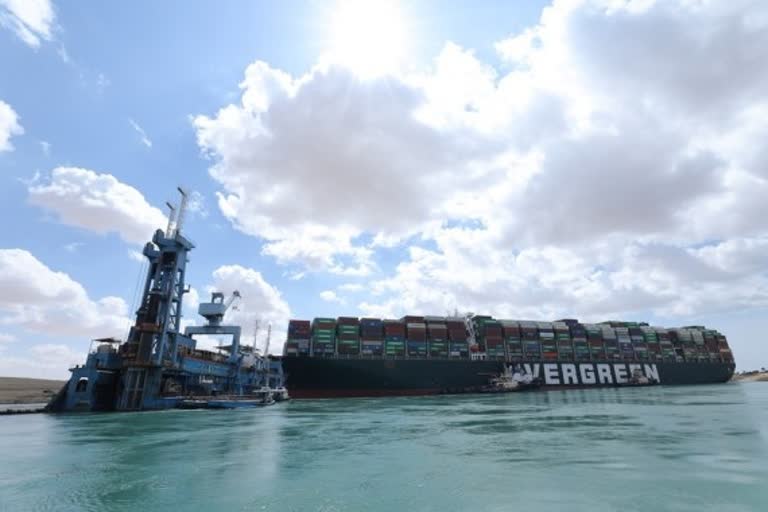Business Desk, ETV Bharat: In a sigh of relief for traders across the world, Suez Canal authorities succeeded in straightening the colossal container ship that blocked the one-lane waterway last week sending shockwaves through the global trade.
Lt Gen Osama Rabei, the head of the Suez Canal Authority, confirmed that workers had straightened the vessel's position by 80% and that the stern had moved 102 metres from the canal bank.
He further said that the vessel had been partially refloated after responding successfully to pull-and-push manoeuvres.
Satellite data from MarineTraffic.com showed that the ship's bulbous bow, once firmly lodged in the canal's eastern bank, had been wrested partially from the shore although it remained stuck at the canal's edge.
Although the movement represented the most significant progress yet, the salvage crew urged caution as obstacles loomed.
Nearly a week ago, the skyscraper-sized Ever Given got stuck sideways in the Suez Canal, creating a massive traffic jam.
The obstruction has held up billions of dollars of global trade and strained supply chains already burdened by the Covid-19 pandemic.
At least 367 vessels, carrying everything from crude oil to cattle, were still waiting to pass through the canal, while dozens were taking the alternate route around the Cape of Good Hope at Africa's southern tip, adding some two weeks to journeys and threatening delivery delays.
The partial freeing of the vessel came after intensive efforts to push and pull the vessel with 10 tugboats when the full moon brought spring tide, Leth Agencies said, raising the canal's water level and hopes for a breakthrough.
Videos shared widely on social media appeared to show tugboats in the canal sounding their horns in celebration of the Ever Given being partly wrenched from the shore.
Insurance firms stare at huge losses
As unblocking of Suez Canal is still a work in progress, the global insurance industry is awaiting the enormity of claims.
For India, pressure could mount for certain industries that depend on Europe and the US and it is expected that there could be pressure for a while on the Indian ports on the west coast as many of these vessels may seek berthing together in rapid succession.
